
After a series of poor performances of her Broadway show The Exciters, Heywood Broun told Tallulah Bankhead:
“Don’t look now, but your show’s slipping.”

After a series of poor performances of her Broadway show The Exciters, Heywood Broun told Tallulah Bankhead:
“Don’t look now, but your show’s slipping.”
In 1946, while on location shooting The Yearling, Victor Fleming was barraged with interfering telegrams by producer Sidney Franklin. Finally he wired back:
JUST SAT DOWN AND READ SCRIPT AND YOUR TELEGRAM TO DEER + FEEL HE WILL DO BETTER HEREAFTER.
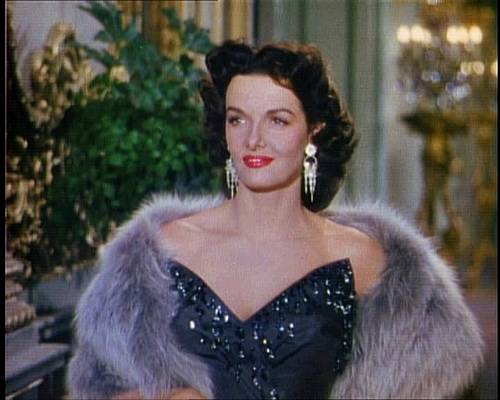
Hollywood has always abbreviated long titles — Gone With the Wind became known as GWTW, and For Whom the Bell Tolls as FWTBT.
One Jane Russell picture was tentatively titled Tall in the Saddle until an RKO publicist pointed out this trend.
The title was dropped.
On Aug. 10, 2004, Cincinnati Reds first baseman Adam Dunn hit a ball entirely out of Cincinnati’s Great American Ball Park. It landed on Mehring Way, 535 feet from home plate, hopped another 200 feet or so, and came to rest on a piece of driftwood on the edge of the Ohio River.
That part of the river belongs to Kentucky. This makes Dunn the only player in major league history to hit the ball into another state.
See Pop Fly and Four-Dimensional Basketball.
In 1929, aspiring actor Charles Loeb had a friend pack him into a box labeled “Statue–Handle With Care” and ship him from Chicago to the Pathé motion picture studios in Culver City, Calif.
He arrived four days later, nearly dead, but told police he was pleased he’d finally made it through the gates of a major studio.
See Special Delivery.
Sam Goldwyn entered show business as Sam Goldfish.
In 1916 he formed a production company with Edgar Selwyn, and the two combined their names to form Gold-Wyn Pictures.
Critics pointed out that the alternative would have been “Selfish Pictures.”

Robert Coates (1772-1848) achieved his dream of becoming a famous actor. Unfortunately, he was famous for being bad — like William McGonagall, Coates was so transcendently, world-bestridingly awful at his chosen craft that he attracted throngs of jeering onlookers.
In one performance of Romeo and Juliet, when he gave his exit line, “O, let us hence; I stand on sudden haste,” his diamond-spangled costume dropped a buckle and he began to hunt for it on hands and knees. “Come off, come off!” hissed the stage manager. “I will as soon as I have found my buckle,” he replied.
And that was a good night. He regularly improvised his lines; he took snuff during Juliet’s speeches and shared it with the audience; he tried to break into the Capulet tomb with a crowbar; he was pelted with carrots and oranges; he dragged Juliet from the tomb “like a sack of potatoes”; and he died on request, several times a night, always first sweeping the stage with his handkerchief. (“You may laugh,” he told one audience, “but I do not intend to soil my nice new velvet dress upon these dirty boards.”)
Once, having been killed in a stage duel, he overheard one woman wonder whether his diamonds were real. He sat up, bowed to her, said, “I can assure you, madam, on my word and honor they are,” and died again.
The Strand Magazine ran an alarming feature in 1910: “If Insects Were Bigger.” The editors inserted photographs of ordinary English insects into contemporary Edwardian street scenes, with pretty terrifying results. “What a terrible calamity, what a stupefying circumstance, if mosquitoes were the size of camels, and a herd of wild slugs the size of elephants invaded our gardens and had to be shot with rifles!”
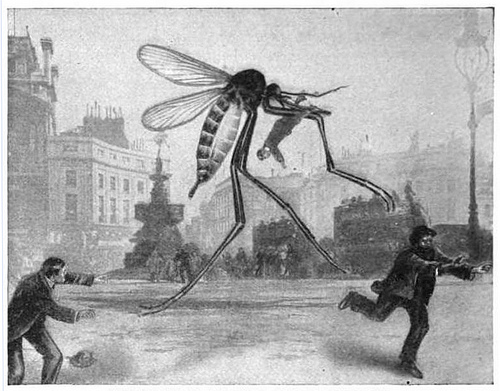
“Panic Caused by a Mosquito in Piccadilly Circus.”
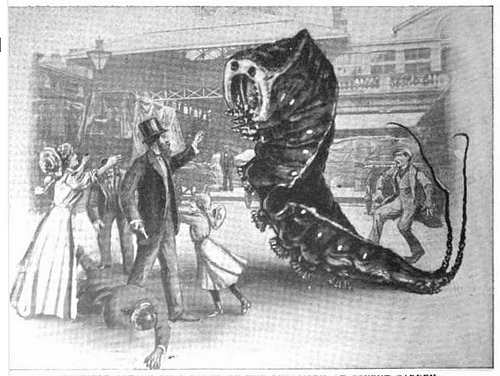
“Terrible Attack by a Larva of the Puss-Moth at Covent Garden.”
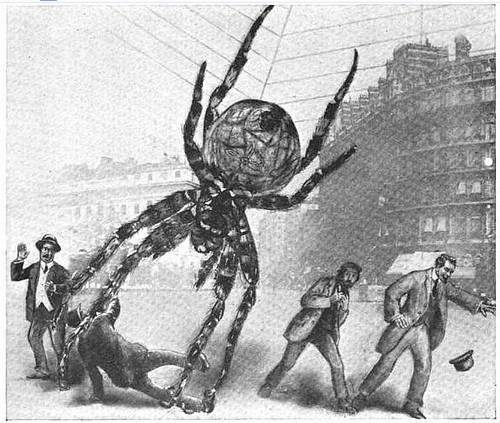
“The Araneus Diadema Spider Descends Upon Trafalgar Square.”
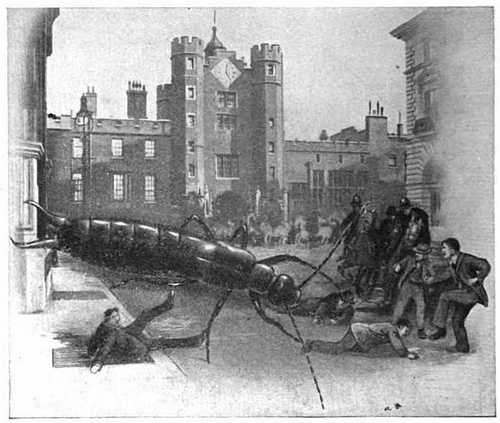
“Fierce Onslaught by an Earwig in St. James’s Street.”

“A Dragon-Fly Captures an Unsuspecting Four-Wheeler in Liverpool.”
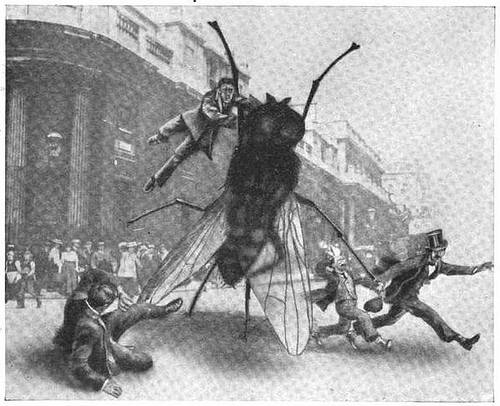
“Exploits of a House-Fly at the Bank of England.”

“A Leviathan Grasshopper’s Arrival in Princes Street, Edinburgh.”
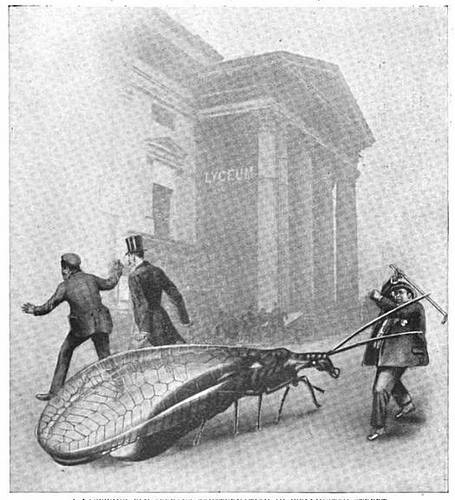
“A Lacewing Fly Spreads Consternation in Wellington Street.”
Author J.H. Kerner-Greenwood wrote: “It is true we are still molested by hordes of wild animals of bloodthirsty propensities. These wild animals only lack the single quality–namely, that of size–to render them all-powerful and all-desolating, and this quality they have not been able to attain owing to the lack of favouring conditions.” Mothra turned up 51 years later.
Carl Voss was a born leader — when he left the Army after World War I, he went on to command Maori warriors, Roman footsoldiers, and revolutionary Americans.
Voss was leader of the “Military Picture Players,” a group of up to 2,112 former servicemen who fought one another in Hollywood battle scenes. He drilled his soldiers as infantry, cavalry, and artillerymen and ensured that their appearance was authentic whether they were playing Germans, Hessians, Chinese, Senegalese, Czechs, or Crusaders. And he was good at it: Between The Big Parade (1925) and Four Sons (1940), Voss’s troops clashed in 232 engagements without a serious casualty.
So it was ironic that red tape finally killed them. The Screen Actors Guild ruled that Voss was essentially an extra and could not direct its members — a curious judgment, as by that time he’d become arguably one of the most versatile commanders in screen history.